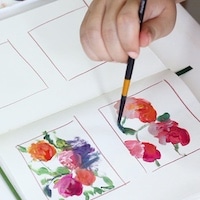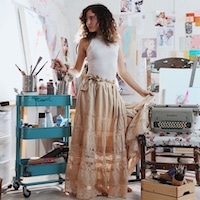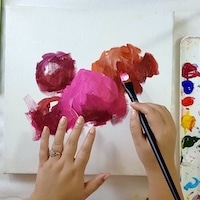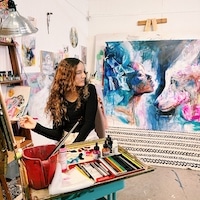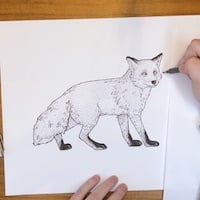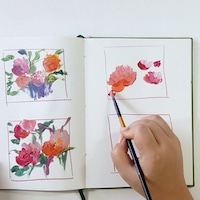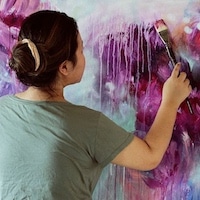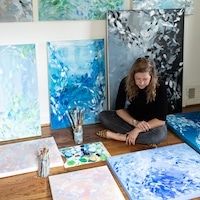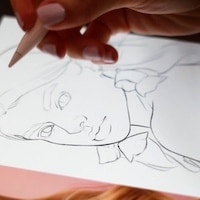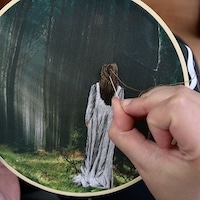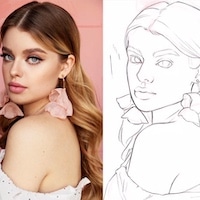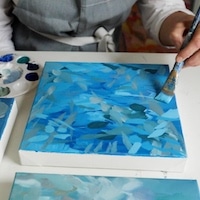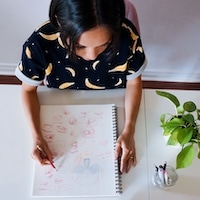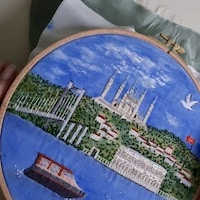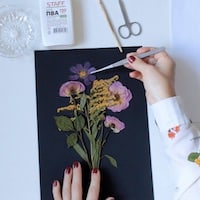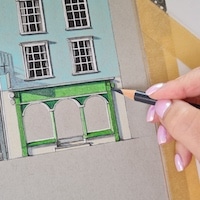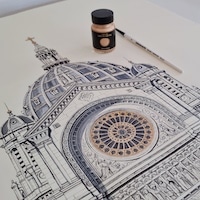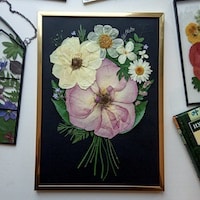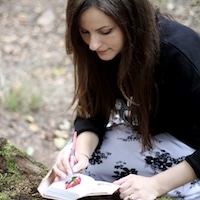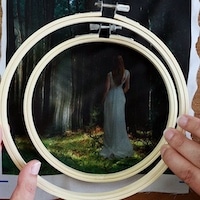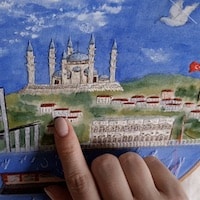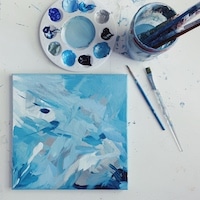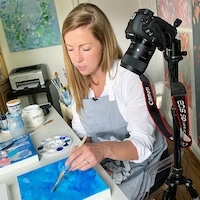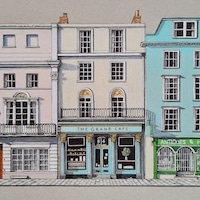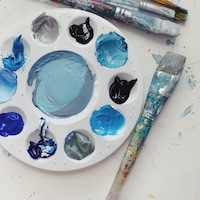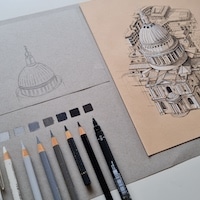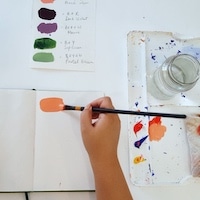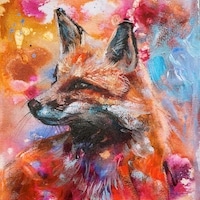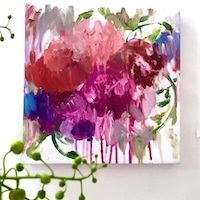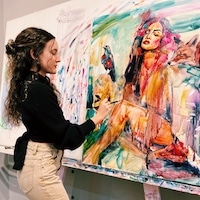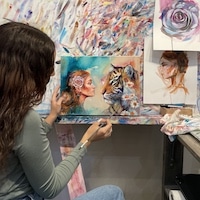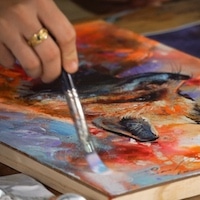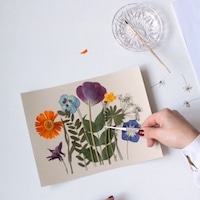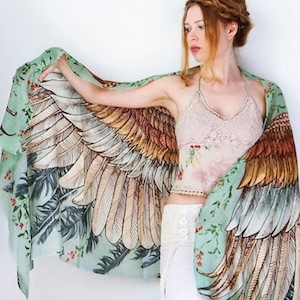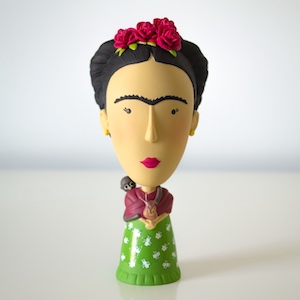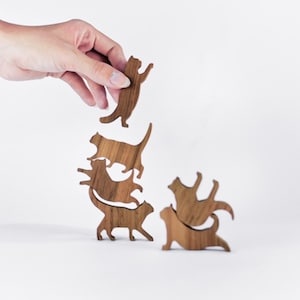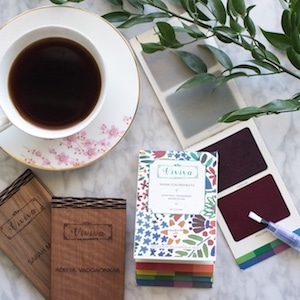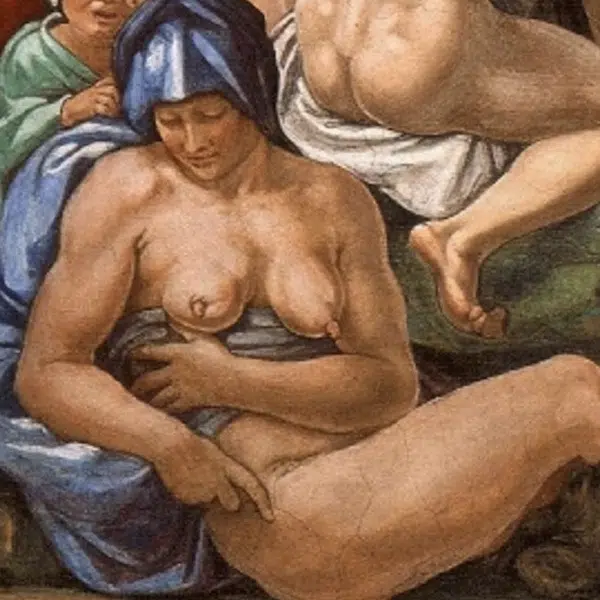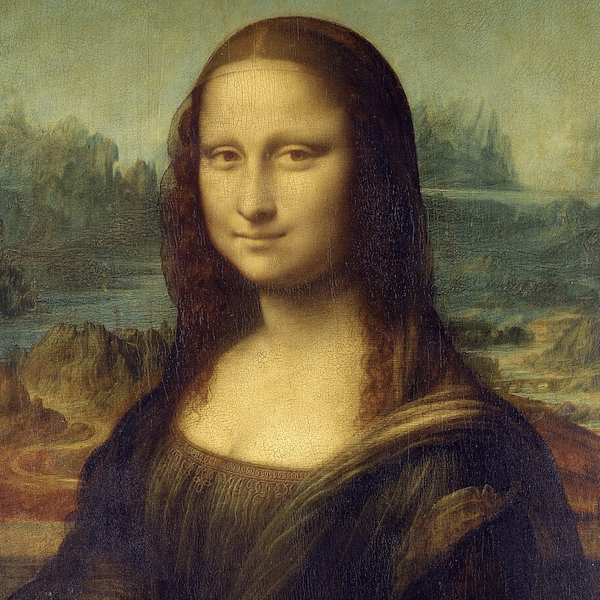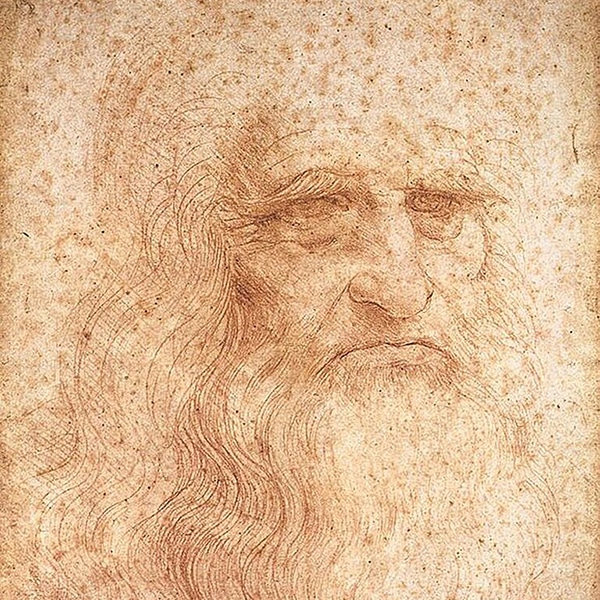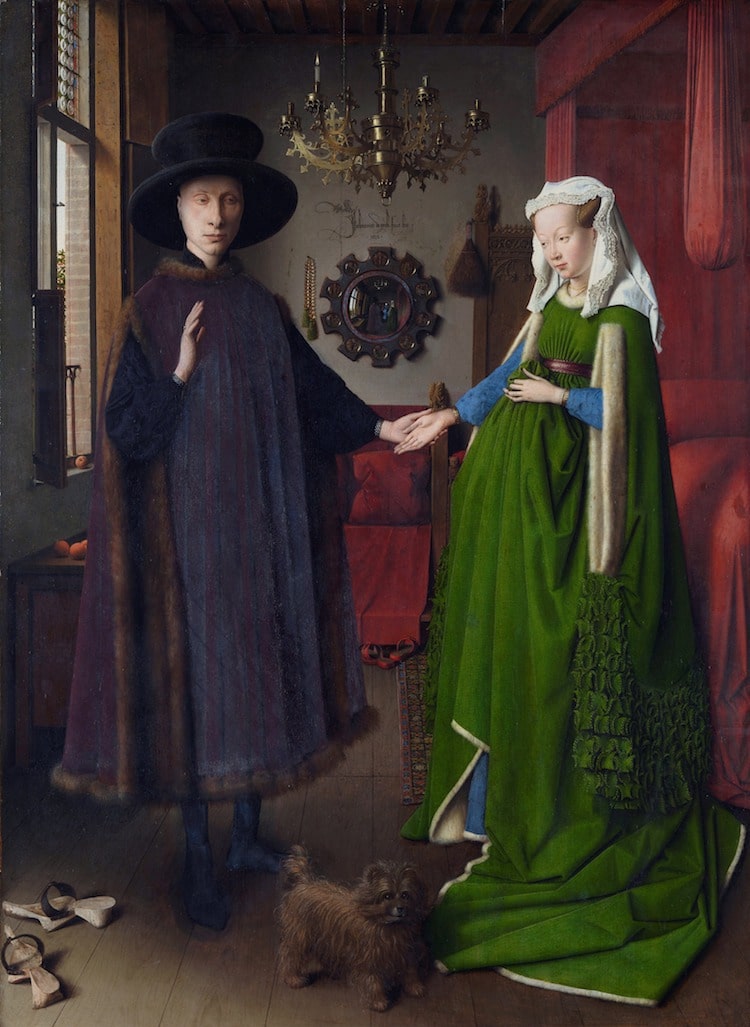
Jan Van Eyck, “The Arnolfini Portrait,” 1434. (Photo: National Gallery via Wikimedia Commons [Public Domain])
His most prominent work, The Arnolfini Portrait, remains an icon of the Northern Renaissance—encapsulating many of the aesthetic ideals and technical innovations of the time period. However, there is more to the masterpiece than its rich color palette. Hidden in the design are layers of iconography that help to tell the story of the couple depicted.
Here, we will explore how Van Eyck's masterful achievement of painting came to be and look at some of its well-placed symbolism.
Title | The Arnolfini Portrait |
Artist | Jan Van Eyck |
Year | 1434 |
Medium | Oil on canvas |
Size | 32.4 in x 23.6 in (82.2 cm x 60 cm); panel 33.3 in x 24.6 in (84.5 cm x 62.5 cm) |
Location | National Gallery (London, England) |
The Northern Renaissance and Jan van Eyck
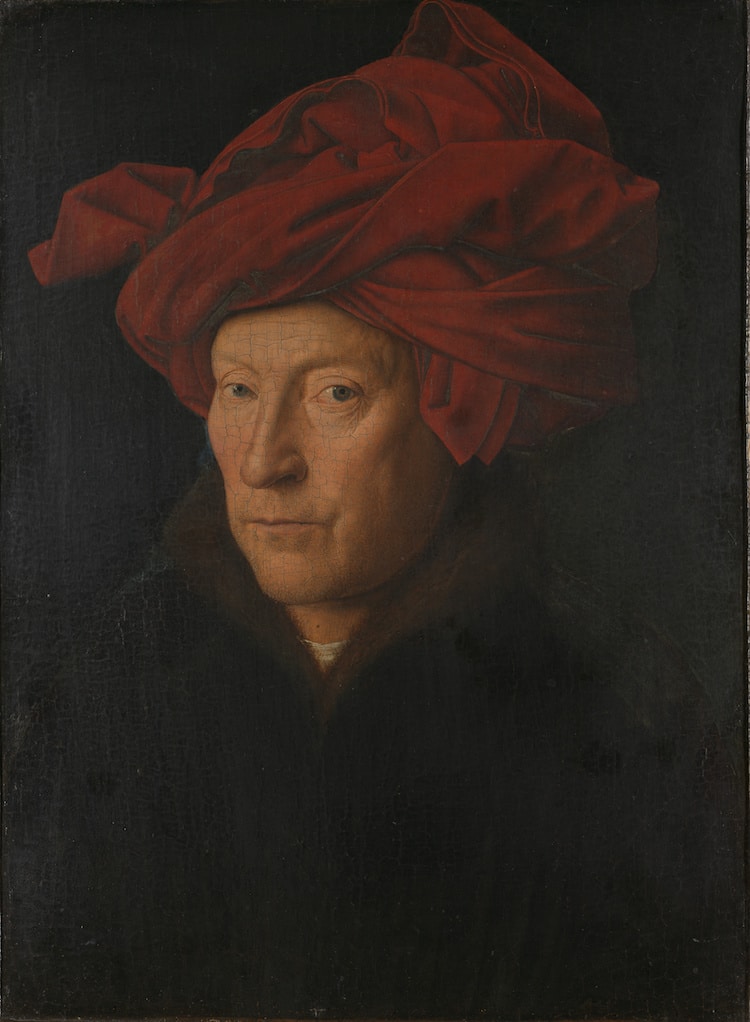
Jan Van Eyck, “Self-Portrait,” 1433. (Photo: National Gallery via Wikimedia Commons [Public Domain])
Full Name | Jan Van Eyck |
Born | sometime between 1380 or 1390 (Maaseik, Belgium) |
Died | July 9, 1441 (Bruges, Belgium) |
Notable Artwork | Ghent Altarpiece, Arnolfini Portrait |
Movement | Northern Renaissance |
At the same time the Italian Renaissance revived classical aesthetics in 15th-century Italy, the Northern Renaissance swept through artists north of the Alps—particularly, in the Netherlands, Belgium, Germany, France, and England. Like its Southern counterpart, this period also emphasized realism but with a focus on painting and printmaking.
Flemish artist Jan van Eyck is considered to be one of the most notable painters of the Northern Renaissance and produced a number of highly religious works. Although oil painting had existed for some time, Van Eyck is credited with being the first to utilize its potential for color and realism.
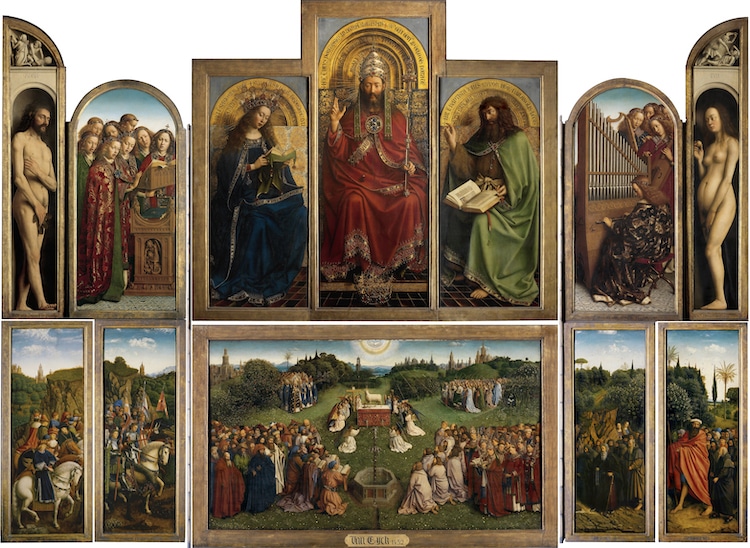
Jan van Eyck and Hubert van Eyck, “Ghent Altarpiece,” 1432. (Photo: Public Domain)
The Ghent Altarpiece is considered to be his first masterpiece in the medium, which he and his brother Hubert (who was also an artist) painted over a ten-year period. It displays a rejection of the idealized Medieval style in favor of more realistic art that was rooted in almost a scientific observation of nature.
Painting The Arnolfini Portrait

Jan Van Eyck, “The Arnolfini Portrait,” 1434. (Photo: National Gallery via Wikimedia Commons [Public Domain])
At first glance, The Arnolfini Portrait stands out for the intensity of its color palette. On the left side of the piece, the man dons a heavy blue-black coat with fur trim, and on the right, his wife wears an emerald overdress with textured sleeves. Each article of clothing and piece of jewelry seems to glow on the canvas.
Van Eyck achieved this depth of color by using the wet-on-wet technique, in which he added layers of wet paint before the previous layers have dried. This allowed him to expertly blend colors and create a sense of three-dimensionality on the canvas. Additionally, the artist applied layers of translucent glazes to the painting to accentuate not only the realism of the figures but also the luxury of the home.
Iconography in the Painting
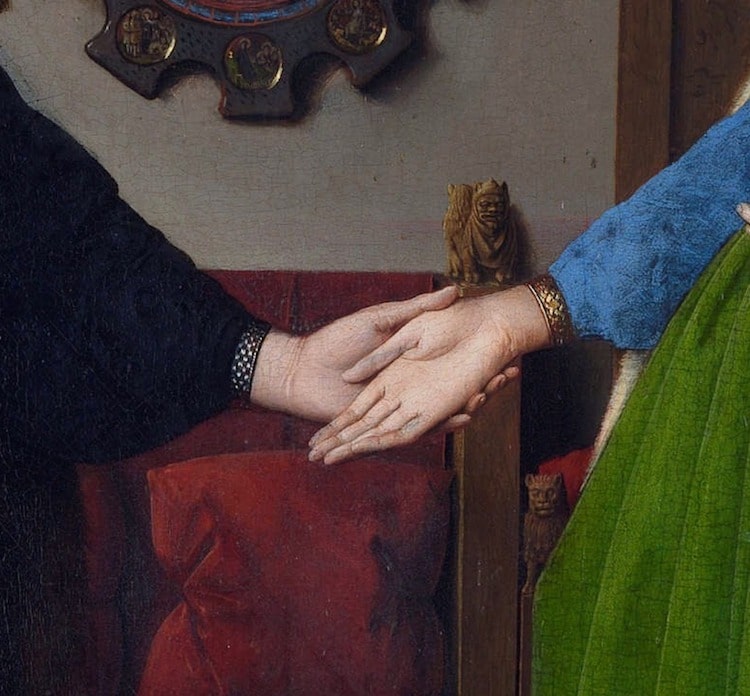
Detail showing the couple's conjoined hands (Photo: National Gallery via Wikimedia Commons [Public Domain])
The exact meaning behind the couple's display of joining hands is still debated among art historians. While some suggest that it is symbolic of a marriage contract, others believe it is a gesture of consent for the wife to act on behalf of the husband's business dealings.

Detail of the convex mirror (Photo: National Gallery via Wikimedia Commons [Public Domain])
Above the mirror is a fanciful Latin inscription that says “Jan van Eyck was here 1434.” This reaffirms the artist's presence in his own work.
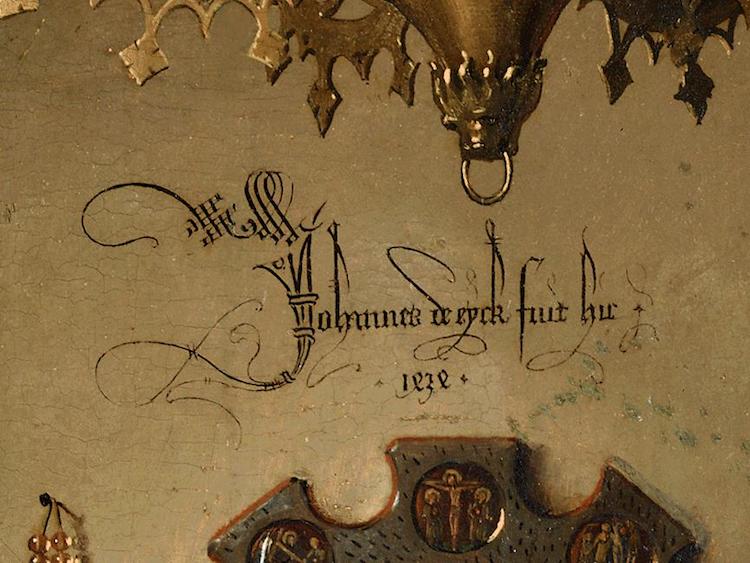
Jan van Eyck's inscription: “Jan van Eyck was here 1434” (Photo: National Gallery via Wikimedia Commons [Public Domain])

Detail of the dog Detail showing the couple's conjoined hands (Photo: National Gallery via Wikimedia Commons [Public Domain])
Related Articles:
10 Facts About Leonardo da Vinci’s Incredible Life
How the Florence Cathedral Spent Centuries Under Construction to Become a Beloved Landmark
Immerse Yourself in the Long-Running Tradition of Bathers in Art
How Chiaroscuro Emerged From the Dark to Become One of the Most Iconic Painting Styles




